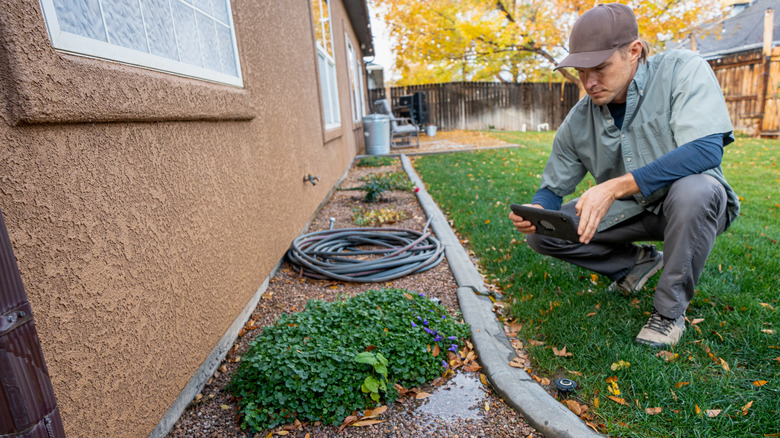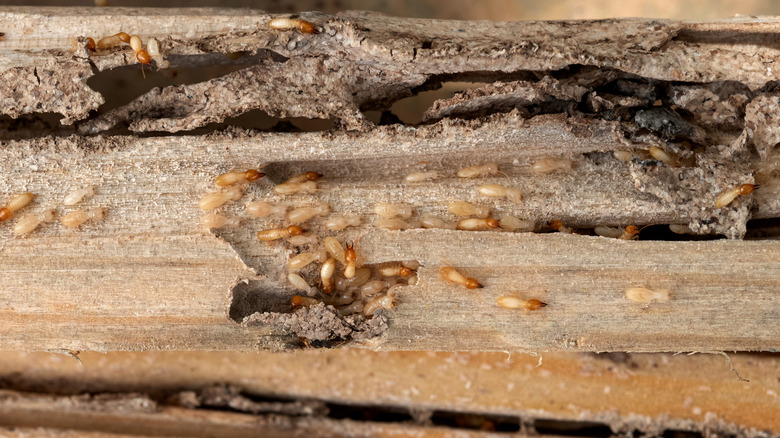Dry Mud Tubes Along Your Home's Foundation Are A Sign Of One Major Pest Problem
Let's say you've found a system of connecting mud tubes around your home's foundation. At first, you might not think much about this long, connective network. However, you should take these mud tubes seriously — they may mean termites. Since insurance companies aren't usually inclined to pay for any termite damage to your property, you should prioritize having a professional inspect your home to see how severe the infestation is. They'll look for tubes that are between ¼ of an inch to an inch wide. These tubes could be located on your home's foundation, ceilings, or even inside walls. However, you'll need a professional to check cracks and crevices, as the pros know what to look for.
While you may want to wipe these mud tubes away, if termites are nesting in your home's wood, they'll be back to rebuild them. These tubes offer protection from predators while termites move from place to place to forage for food. There are various ways to get rid of termites, but this often requires a proper inspection to make sure termites are, in fact, the problem inside your home. After that, you'll need a termite removal plan. For example, when hiring professional pest control companies, some use IPM or Integrated Pest Management. These plans work to expose homeowners to as few pesticides as possible and look to use non-toxic ways of discouraging pests, such as removing items that draw bugs to your home.
What does a termite infestation look like?
It's important to look for signs of termites besides mud tubes on your foundation or ceilings. For example, check for bug wings. Certain types of termites have two sets of wings and drop their wings when it's time to mate. This usually happens in the spring right when everything is thawing out.
You should also look for wood damage to your home, as termites feed on wooden structures. You could see it in support beams, decks, foundations, and more. You should also inspect your home's baseboards. You might notice bubbled paint or wood that easily crumbles. Next, pay close attention to ceilings. Do they crumble or sink in any areas? It's common to mistake termites for water damage, so be on the lookout.
Termites also look to eat anything with cellulose, such as magazines, books, textiles, and furniture. If you notice damage to any of these items, you may have termites. Another issue is if your home has already sustained water damage, then it's easier for termites to infiltrate. This means that termites might signal that it's time to call the plumber. If you notice any signs of a termite pest infestation, be sure to have a pest control technician over to your house as soon as possible. A termite colony can destroy a home's foundation in as little as five years, so don't delay treating this type of pest problem.


